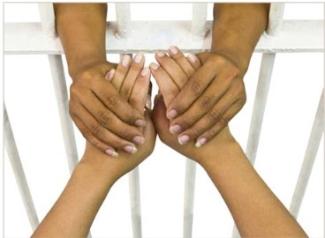
Later this month, many of us will be celebrating a variety of holidays—Christmas, Hanukkah, Kwanzaa, and so on. We may be looking forward to a whole host of things: eating special foods, gifts, time off from work, rest and relaxation, traveling, and spending time with family and other loved ones. For families with a parent currently incarcerated, however, the reality is very different.
According to the Bureau of Justice Statistics 2016 Survey of Prison Inmates, nearly 1.5 million children have an incarcerated parent. A 2015 report "found that more than five million children, representing seven percent of all U.S. children, have ever had a parent" in the carceral system. It follows, then, that there are families in our community who are currently experiencing the distance and isolation commonly associated with being incarcerated. During the holidays, that distance and isolation, often compounded by financial demands, can make this season an undue burden.





